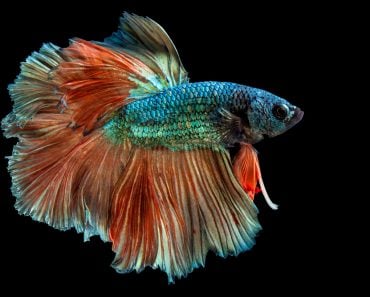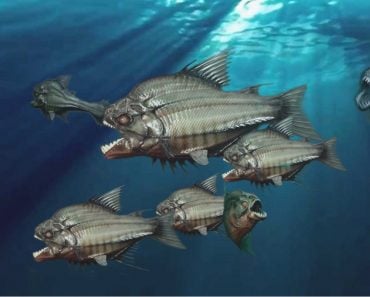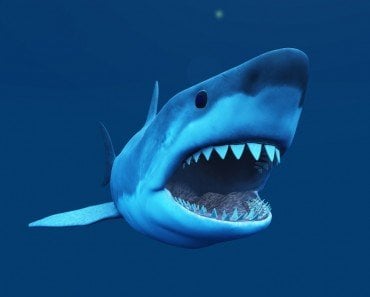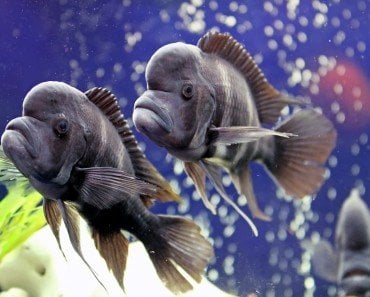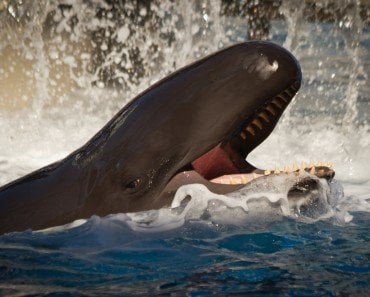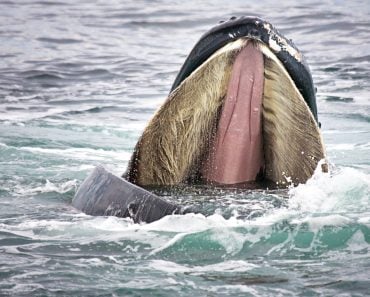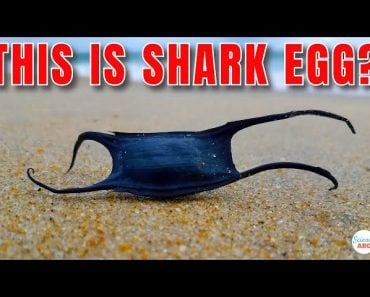Table of Contents (click to expand)
The sheepshead fish is a deep-bodied, compressed marine fish with sharp dorsal spines. The fish commonly reaches 10-20 inches, but can grow to be as large as 35 inches in some cases! It has a hard mouth and stubby teeth that bear a striking resemblance to human teeth.
One glance at the picture of a sheepshead fish might make you assume this fish has stolen a sailor’s lost pair of dentures from the seafloor! Yes, there is a fish whose teeth are eerily similar to humans.
The fish has reared its toothy grin on social media, confusing, disgusting, and delighting, variously, those who look at it. The fish is sometimes sold commercially and often recreationally, but it is especially known for possessing teeth that look incredibly similar to ours.
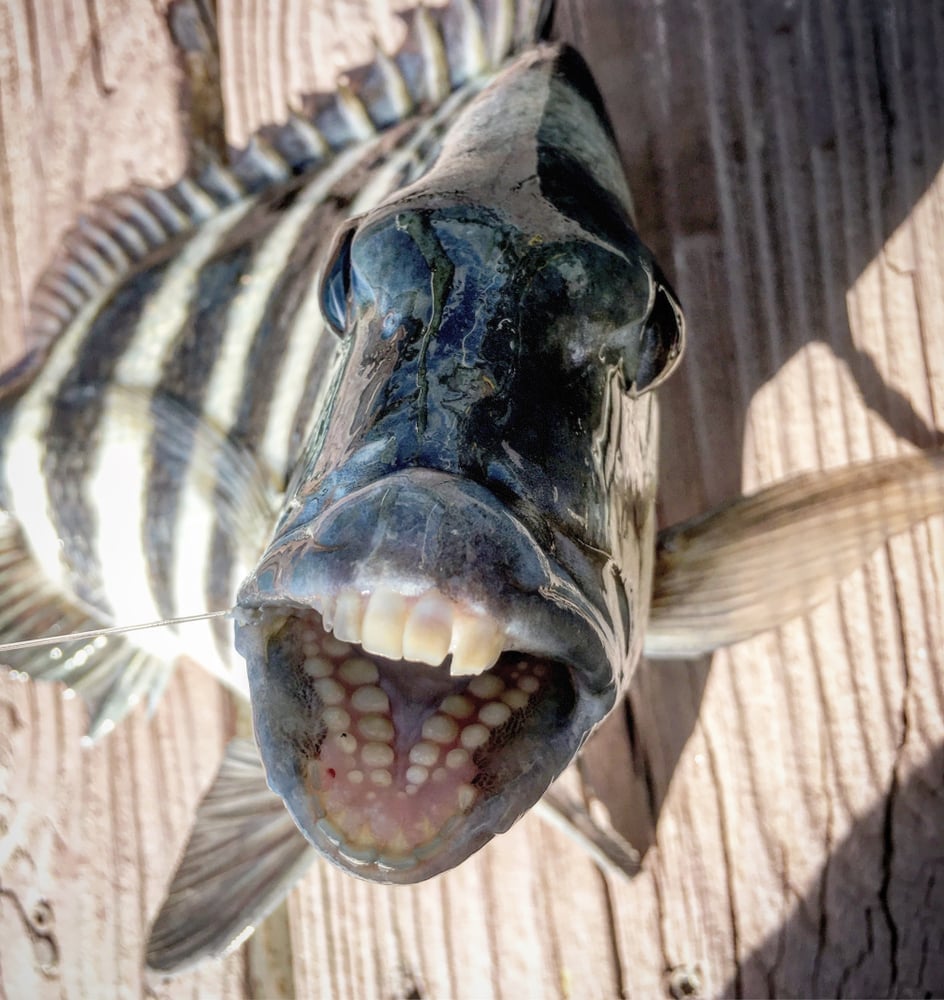
The sheepshead fish is a deep-bodied marine fish with sharp dorsal spines. The fish usually grows 10-20 inches long but can sometimes grow to 35 inches and is commonly found in North and South America, usually weighing around 9.6 kg (21.2 lbs) and reaching 91 cm (35.8 inches) in length.
Recommended Video for you:
Classification
The term ‘sheepshead’ is used for a few other fish. There’s the sheepshead minnow and the sheepshead fish, both of which are different species. The sheepshead fish we’re referring to is the sheepshead seabream or Archosargus probatocephalus.
Kingdom: Animalia (animals)
Phylum: Chordata (animals with backbones)
Order: Perciformes (ray-finned fish)
Family: Sparidae (seabreams)
Genus: Archosargus
Species: Probatocephalus
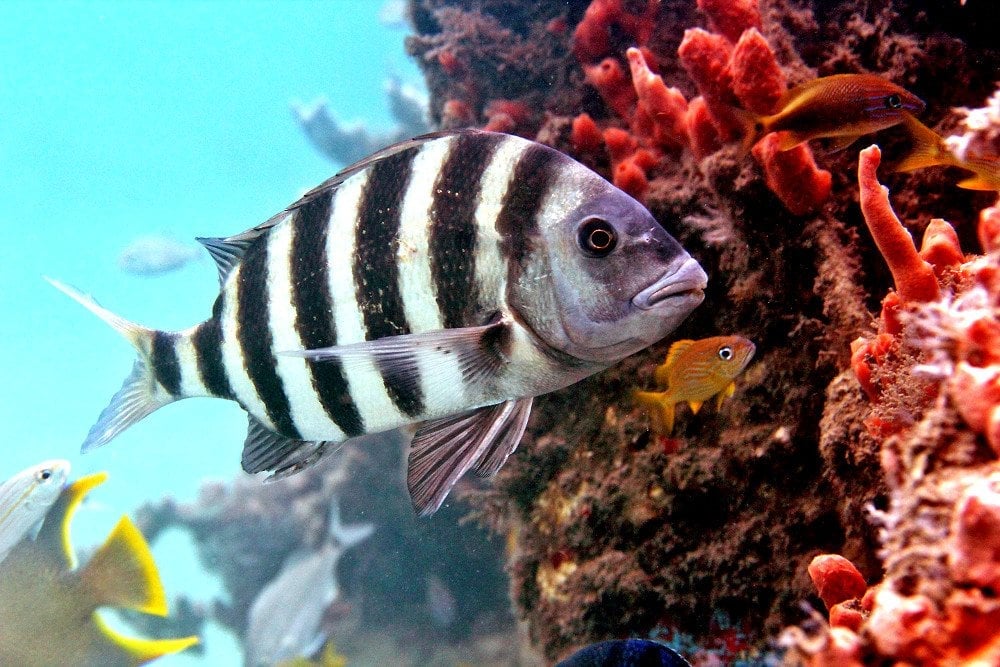
Before we talk about the unusual chompers of this quirky marine creature, let us learn about its appearance, anatomy, and habitat.
Sheepshead Anatomy
You can infer quite a bit about the fish’s anatomy from the above classification. For one, it has a backbone or a vertebrate. They are deep-bodied, ray-finned fish. Deep-bodied fishes are those fish that look like chubby pancakes swimming on their side. The scientific name for deep-bodied fishes is compressiform fishes. Similar-looking fish are Butterflyfish, Angelfish, and Bannerfish.
The back of the sheepshead is raised behind its head, which is sloping and deep in profile. It has a short snout with an almost horizontal and inferior mouth. Its scales are finely serrated, with sharp spines on the back. It is usually green-yellow or gray and marked with 5-7 vertical black bars, which is why it is also called the convict fish.
It is generally seen that the anal, ventral, and dorsal fins are black or gray, while the pectoral and caudal fins have a greenish hue.
Sheepshead Fish Habitat
Sheepshead fish is found on the Gulf and Atlantic coasts of the United States.
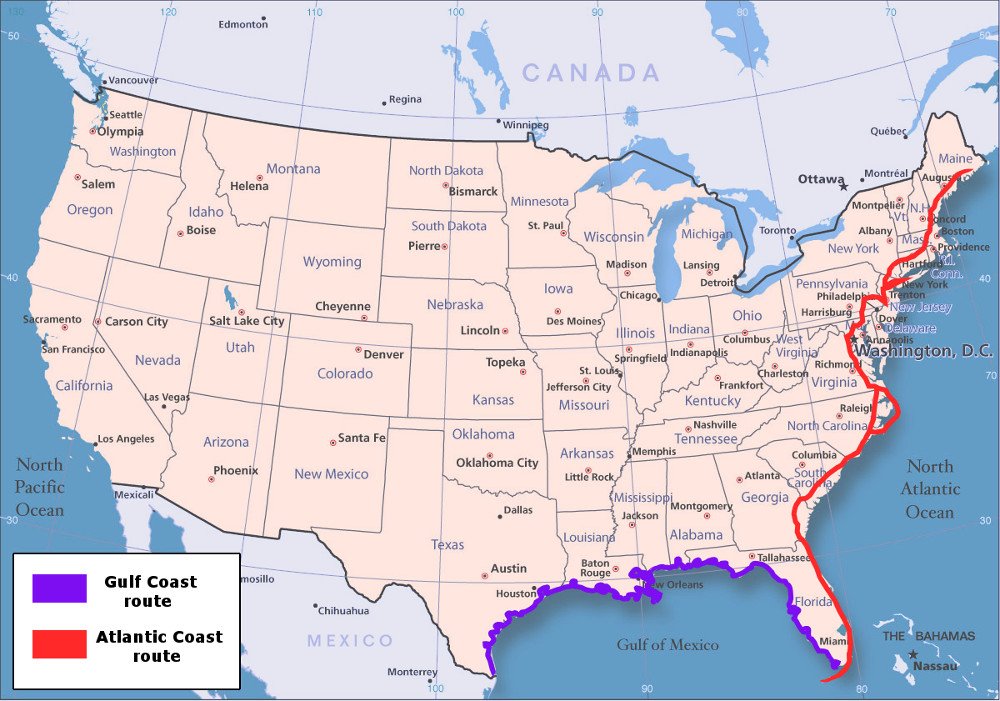
This fish is found from Nova Scotia up north through Florida (the greatest concentration of the sheepshead fish is found here) in the USA and from the Gulf of Mexico down to Brazil.
Sheepshead is a euryhaline species, a fish that can tolerate water with wide differences in salinity. They thrive in brackish waters, especially at the confluence of rainwater runoff with salty estuaries. They are also found in freshwater habits, entering rivers during the winters, according to Maryland’s Department of Natural Resources.
In Brooklyn, New York, there is a bay called Sheepshead Bay, named after this fish, but the namesake fish have left this bay due to an increase in their degree of pollution.
It is fairly close to the shore and feeds on shelled creatures.

Adult sheepshead fish prefer habitats with some topographic relief and are also frequently spotted near oyster reefs, breakwaters, muddy shallows, wrecks, piers, and the Gulf of Mexico. Although the sheepshead fish is not truly migratory, they tend to move to offshore spawning grounds when the water temperature dips in late autumn and winter.
Sheepshead Fish Teeth
One of the most striking characteristics of the sheepshead fish is its teeth, which are amazingly similar to those we have in our mouths!
Take a look at the following picture:
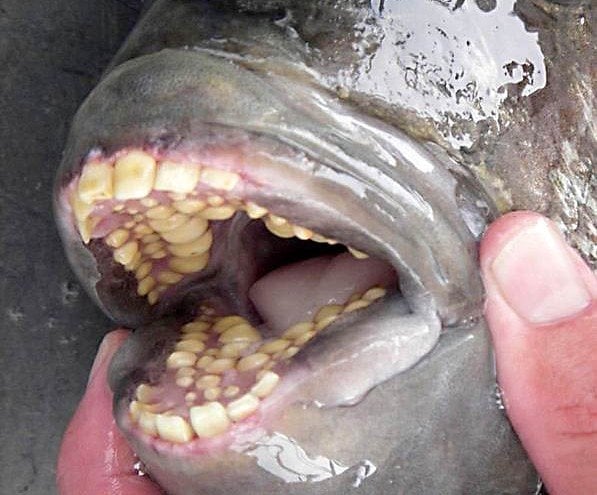
As you can see, the anterior (front side) teeth of the sheepshead are incisor-like, while the posterior (backside) molar teeth are set further back. Sharp and thick teeth appear when a sheepshead fish is just 4.5 mm long, and as soon as the fish becomes about 15 mm long, all incisors appear. At the same time, its rear teeth develop into adult molars.
The teeth are composed of highly mineralized enamel and dentin, two components that also make up human teeth.
There are two rows of molars on the lower jaw and three rows on the upper jaw. This heavy dentition allows sheepshead fish to crush and grind the shelled creatures that these fish prefer to feed on.
Fascinating as it is to see a row of “human teeth” on a fish, it’s a bit strange… isn’t it?
Sheepshead Fish Food
The teeth of sheepshead fish are perfectly suited to its omnivorous and highly diverse diet. They can devour almost any kind of organic material found in the sea. But, they mainly consume small vertebrates, invertebrates, and plant material.
The most common foods scientists find in the stomachs of these fish are hard-shelled animals such as barnacles, bryozoa (a type of microscopic animal that forms colonies), corals, and mollusks.
As they grow larger, they turned to other delicacies, including crabs, worms, fish, and other crustaceans. Interestingly, sheepshead fish fed heavily on them when seaweed and algae were abundant. The sheepshead will eat any immobile invertebrate living at the bottom of the ocean.
The diet of sheepshead fish does vacillate with location, weather, and food availability. Although mollusks are pretty much a staple food and are eaten almost all year round, sheepshead fish prefer to eat fish in spring, whereas, in the summer, they prefer to eat plants and detritus. In spring, autumn, and winter, sheepshead fish like to dine on polychaete worms.
Due to their predilection to consume species in abundance, sheepshead fish provide a key service in preserving the biodiversity of the water body. They often eat organisms that, if left to go rogue, can proliferate and foul the ocean beds—the amphipods Erichthonius brasiliensis and Caprella equilibra—crowding out other life crucial to the ecosystem’s health. Their feeding habits shape the ocean floor.
Importance, Ecologically And To Humans
Sheepshead fish are important fish for recreational purposes. They’re a prized catch for anglers. Commercially, they are rarely the chosen fish for cuisine. Still, they are often caught in trawls and do end up on consumer plates, especially as replacements for other fish, such as snapper, according to the Gulf States Marine Commission. There are multiple recipes to cook sheepshead if you do catch one on your local fishing trip.
The fish are not listed as endangered or threatened, according to the International Union for Conservation of Nature (ICUN). But their role as ecosystem architects (and also members of all the odd living things on this planet) makes them an important species to study.
One study, published in 2021 in the journal Science, studied how sheepshead fish were caught by humans over 200 years ago. Using evidence from archaeological sheepshead bones and collagen of 353 sheepshead fish from the 1700s and historical evidence of communities that lived around the Gulf of Mexico during those periods, they found that sheepshead fish decreased in size between 1730 and 1830 due to overfishing. Though the fish along the coast recovered in size, they were being fished from varied locations than before.
References (click to expand)
- 11,180 - www.sms.si.edu
- Sheepshead Fisheries Profile 2006.
- http://web.archive.org/web/20220814155819/https://txmarspecies.tamug.edu/fishdetails.cfm?scinameID=Archosargus%20probatocephalus
- Sheepshead (Archosargus probatocephalus).
- Deang, J. F., Persons, A. K., Oppedal, A. L., Rhee, H., Moser, R. D., & Horstemeyer, M. F. (2018, May). Structure, property, and function of sheepshead (Archosargus probatocephalus) teeth. Archives of Oral Biology. Elsevier BV.
- Sedberry, G. R. (1987, April 1). Feeding Habits of Sheepshead, Archosargus probatocephalus, in Offshore Reef Habitats of the Southeastern Continental Shelf. Northeast Gulf Science. University of Southern Mississippi.
- Archosargus probatocephalus – Discover Fishes.
- Guiry, E. J., Kennedy, J. R., O’Connell, M. T., Gray, D. R., Grant, C., & Szpak, P. (2021, August 6). Early evidence for historical overfishing in the Gulf of Mexico. Science Advances. American Association for the Advancement of Science (AAAS).
- Sheepshead Fish - Maryland Fish Facts - Maryland.gov.


